Let's face the facts about crawl spaces. They leave a lot to be desired.
Most crawl spaces are difficult to access in most cases they are stuffy, dusty, and full of insects.
To make matters more complicated there are so many questions about how to properly seal and insulate an open crawl space. For example:
When should crawl space vents be open?
Does an encapsulated crawl space need insulation at the ceiling?
How much does it cost to insulate a crawl space?
What is the best way to encapsulate a crawl space?
Do I need a vapor barrier in my crawl space?
What does it mean to seal a crawl space?
As an energy auditor, certified through the local Maryland utility, it is important to properly examine a crawl space in a number of different scenarios which can be complicated. My method of simplifying the way I think helps me figure out the right solutions and explain them in easy-to-understand ways to the homeowner.
The information below is common insights required to make an informed decision about how to properly treat your crawl space.
Old School Thinking: I See Insulation Everything is Fine
If you live in a home on a crawl space there is a very good chance that you think that this just is the way it is and there is not much you can do.
When you first moved in you ambitiously went into the crawl and you saw insulation below the floor. Everything seemed fine.
Maybe you have never looked in the direction of your crawl space, or any crawl space for that matter, and have no idea what one may look like.
If that is the case, have a look at this video taken during a BGE energy audit of a typical open crawl space.
When Should Crawl Space Vents Be Open?

If possible, crawl space vents should always be blocked and sealed. Crawl space vents provide virtually no benefit by being open.
Creating vent openings in the foundation wall were designed to allow "fresh" air into the crawl space for ventilation. Millions of homes have been built using this method.
The problem is that you can't control what air moves into the crawl space and when it turns hot and humid or cold and dry, the open vent solution is not the best for climates that have seasonal changes like Maryland.
You cannot count on enough dry, average-temperature days in a row to sufficiently dry out the crawl space. Additionally, considering the vents are typically not nearly large enough or often times obstructed, your crawl space does not stand much of a chance for success and as a result, your indoor comfort and air quality suffer and your energy bills are high.
Check out one common issue due to open crawl space vents.
Open Crawl Spaces: Two Seasonal Problems
Summer Humidity
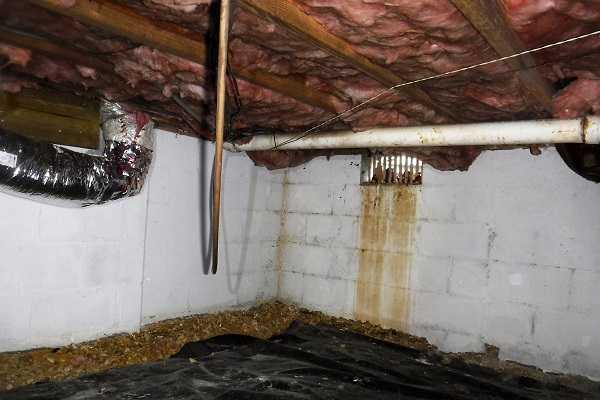 Open vents allow humid air into the space, or worse streaming water, which tends to get trapped and migrate to unwanted places.
Open vents allow humid air into the space, or worse streaming water, which tends to get trapped and migrate to unwanted places.
So many of us plug up our dehumidifier in the summer to keep the basement dry.
Those with open crawl spaces likely have two machines working and they may not be able to keep up with the high humidity.
Open vents in a crawl space can have a significant impact on indoor air quality and are the main factors in high indoor humidity levels.
Eighty percent of crawl spaces in humid climates have insulation that has fallen. Wood structural flooring components should not be subjected to moist, humid conditions for long periods of time.
 Get a comprehensive home energy audit today!
Get a comprehensive home energy audit today!
Winter Issues and How Physics Plays a Role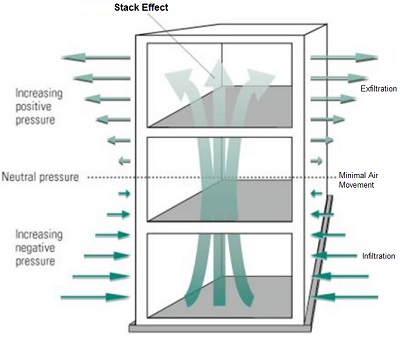
During winter months, cold winter air is actually pulled into the vents due to physical dynamics that are at play - known as the stack effect, or chimney effect. Insulation is unable to prevent infiltration through the floor.
Negative pressure is created in a crawl space when it is connected to the living space above. As warm air rises and finds places to escape, it tugs the cold air from below right on in as seen in the diagram to the right.
The unconditioned cold air that migrates into the crawl space through the vents is then conveyed up through the floor and walls and into your living space.
Therefore, as a result of this physical characteristic of most buildings, having an open crawl space is not a good solution if you live in a location with a cold season.
If You Have a Crawl Space – You Have an Energy Efficiency "Point of Weakness"
Big problems with comfort and high energy bills stem from irregularities in the building shell. Twists and turns in a home’s design create more complex treatment solutions in locations such as:
- Porches
- Roof Overhangs
- Shafts for Chimneys & Pipes
- Protruding Windows & Doors
- Indented Windows & Doors
- Cantilevers
- Garages
- Knee Walls
- Open Basements
- Open Crawl Spaces
Most of the largest leaks in homes occur where framing (such as floor joists or wall studs) spans from an area inside a conditioned space to an unconditioned or vented space, such as the attic, crawlspace, garage, or roof. Appropriate blocking is needed in these instances and it requires a team that knows home performance techniques and solutions to do it right.
Does A Crawl Space Need a Vapor Barrier?
Yes.
Your crawl space needs a properly sealed vapor barrier. Ground moisture will wreak havoc on your wood flooring, joists, and indoor air quality if left unchecked. A fully encapsulated crawl space will always include a sealed vapor barrier.
Watch: Properly Installed Crawl Space Vapor Barrier
What to Look for In Order to Prescribe the Proper Treatment for an Open Crawl Space
No general rule should be applied to how to treat a crawl space. 
These three factors should be considered first:
1. Climate
2. Ground Dampness
3. Presence of Ducts in the Space
In Maryland, we tend to have hot, humid summers and sometimes it can be damp well into the fall. The winters bring cold snaps, some longer than others, that can put a significant load on any HVAC system.
Seasonal changes make sealing crawl spaces in our region a good option. Typically, ducts are in crawl spaces in homes where this foundation type exists.
Crawl space inspections will require defining the best place to establish or re-establish the thermal boundary.
The thermal boundary can be described as the location that divides the inside living space from the outside, unconditioned space of your home.
Most crawl spaces are outfitted with insulation at the ceiling. And, most crawl spaces are sources of energy loss and comfort problems.
If I Have Insulation in My Crawl Space Ceiling, Why is it Such a Problem?
In order to understand any high-performance crawl space insulation retrofit, you must first understand the three key things that getting results depends upon:
- Proper Installation of an Air Barrier
- Proper Installation of a Sturdy Vapor Barrier
- Proper Installation of Insulation
Typically, all three key factors are missing in a crawl space.
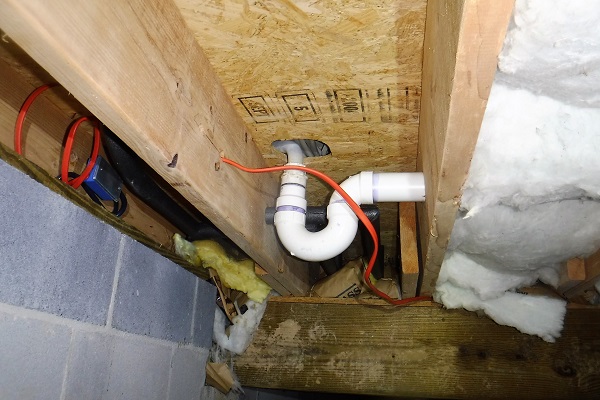 If not properly sealed, penetrations at the crawl space ceiling (floor inside) will lead to communication of air between the two areas.
If not properly sealed, penetrations at the crawl space ceiling (floor inside) will lead to communication of air between the two areas.
A vapor barrier is only good if it is 100% sealed, otherwise, moisture will still migrate up and into your living space.
Fiberglass batting insulation is difficult to install in almost all applications. The thermal performance of batt insulation is heavily dependent on proper installation. To attain maximum R-value, the batt insulation should be in continuous contact with all the surround cavity surfaces where they are installed. They need to be cut exactly to length because if they are too long they bunch up leaving the area to be insulated and exposed and if too short, spaces are created that promote convection.
Open Crawl Space vs. Encapsulated Crawl Space
Past research has shown that a conventionally vented crawl space that has been converted into a non-vented and conditioned space tends to operate similarly to houses with basements, with several benefits for the homeowner:
• Energy savings
• Comfort
• Moisture control
• Long-term durability
• Healthier air quality
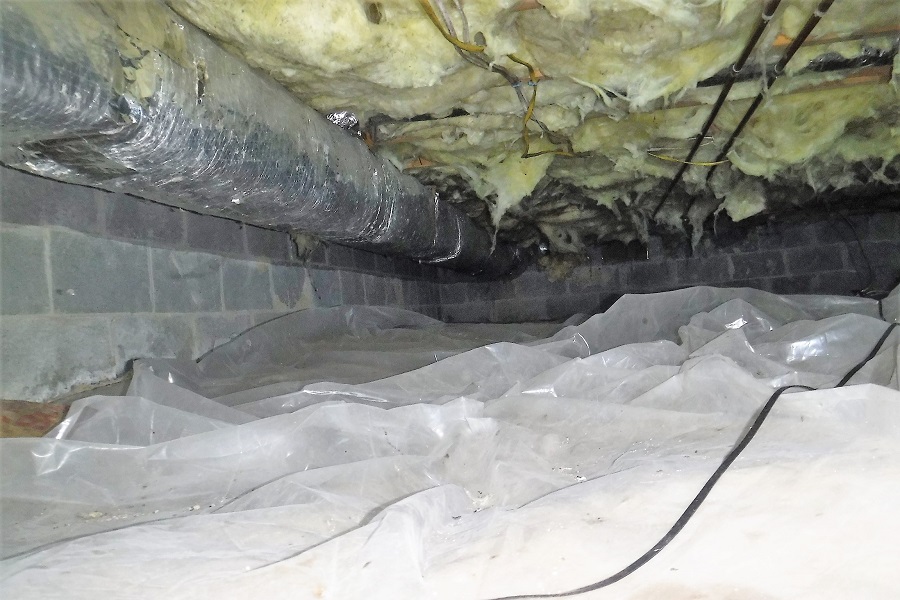
Open crawl space with insulation at the ceiling and an improperly installed vapor barrier.
Watch: Take a Look at a Completed Crawl Space Project Including Blocked and Sealed Vents
Reasons Maryland Homeowners with Crawl Spaces Might Not Choose to Encapsulate
- Significant efforts can be made with ease to seal and insulate ducts, air handlers, water heaters, pipes etc.
- Lacking any paid heat source, the crawl space is consistently between ground temp and outdoor temp which is typically above 32 degrees
- The floor has had significant air sealing and insulation work performed already; some investment has taken place
- The cost to seal and insulate the floor is considerably less than encapsulation for some reason
A Big Opportunity That Often Gets Overlooked
Too often the ducts that are running through crawl spaces are asked to do way too much.
Not only do they need to carry conditioned air to the furthest reaches of your home, but in some cases they are expected to transport 90-degree air through a duct that is supercooled to 25 degrees on the coldest of days.
Sealing a crawl space from the outside can drastically improve the performance of your HVAC system and will contain duct leakage because the immediate barrier outside of the ducts also plays into the amount they leak.
For example, ducts that run through an open crawl space will leak much more due to the pressure dynamics compared to an encapsulated crawl space.
How to Properly Encapsulate a Crawl Space
It is important to not begin a foundation insulation retrofit project until it is well-drained and dry. Drainage should be the priority if the crawl space recurring takes on water.
Next, the crawl space should be free of debris and items that might impede the ability to install a vapor barrier. A thick plastic vapor barrier should always be installed in crawl spaces with dirt floors.
The vapor barrier should be sealed to the walls, piers and any other penetration from the ground.
Crawl space walls should be air sealed and insulated (typically by using a rigid foam board with high R-value) all the way up to the rim joist. The rim and band joist should be air sealed and insulated.
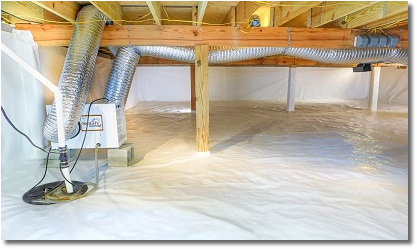
________________
Do you live in Maryland and need advice on how to treat your crawl space?
If you are interested in making your home more comfortable and more efficient, give me a call. We can discuss your situation and likely getting a BGE or Pepco Energy Audit is the way to go.
Incentives through the program can be quite advantageous, particularly for those that know that they have to get this problem resolved once and for all.
Furthermore, an energy audit can uncover other factors that can contribute to your specific issue as each home is different - even the same model across the street.
Give me a call! I'd love to help you out!

Written by Eric Gans
I have over 2000 energy audits under my belt in Maryland. I like to take my personal experiences with each of my audit customers and try to get the things that concern them out into the world so others can make good home improvement decisions - in the right order - according to their needs.



















